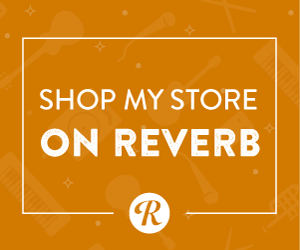
Drumset for Beginners is an exciting and innovative approach to teaching and learning how to play drums. Even while acquiring the basics, students are given room to ‘express’ themselves through the application of essential structural and technical devices. More than this, the book then takes a journey around all the key styles that are the cornerstone of any drummer’s technique, offering a wide selection of subsidiary materials that point the student in the direction of further study once the basics of each style have been mastered. An accompanying MP3CD allows the student direct aural inspiration, but also, the featured play-alongs act as a goal and progress indicator for student and teacher, as well as being great tracks in their own right!
REVIEW 
Drumset for Beginners: The Drummers' Guide To Teaching And Learning The Drumset is a 64-page paperback book with an accompaniment MP3 CD, written by UK drummer educators, Paul Hose and Jim Farey.
The book is divided into four chapters with a forward and biographies of the authors, a drumset legend (key for notation), a brief rudiment review, and appendices which includes: cymbal pattern variations, style analysis, time signature examples, introduction to play-alongs with guide charts, and a glossary of terms/symbols.
Chapter 1: Developing The Basics, spanning twelve pages, covers several elementary pop grooves, referred to as "hook rhythms," using a grid-style notation system, addresses independence with the snare and bass drum, and introduces the beginnings of chart reading, rudimental study, lengths of drum fills, and a word on hi-hat pedals and cymbal pattern variations.
Chapter 2: Reading shows eight basic groove exercises using standard music notation, followed by four lessons on interpretation — making use of Modern Reading Text in 4/4 by Louis Bellson and Gil Breines. The authors also discuss "broken sisteenth-note fills" as a way to develop syncopation, form study, independence, and hand-to-hand sixteenth-note grooves.
Chapter 3: Jazz gives three simple exercises to help the student understand the "inner make-up of the jazz triplet." There is a brief introduction and overview of applying all four limbs for comping and time-keeping, jazz fills and interpretation, broken timing and alternative sticking patterns, a short intro to using brushes (with examples), shuffles, and hi-hat pedal use.
Chapter 4: Latin starts out by giving a brief introduction to the music genre. Clave, Cha-cha, Bossa Nova, Bolero, Mambo, 6/8 Afro-Cuban, Calypso, Mozambique, Samba, and Songo basic patterns are introduced.
Drumset for Beginners is most definitely designed, not only for beginner drummers, but for people who would like to teach drumset but have no formal training or experience from which to draw from. However, seasoned teachers may find this book/CD set valuable for gaining additional ideas on how to introduce lesson topics in a simple, non-intimidating way. The exercise examples and play-along tracks on the CD are well produced. The play-along tracks are especially nice in that they demonstrate the tune/style with a basic drumset part, without drums, then with performance examples from Hose and Farey. The fact that several style concepts are addressed, beginner drummer (and teachers) will gain a nice overview of drumming styles, opening them up for possible further study. The CD also comes with printable PDF charts for all of the play-alongs, as well as blank 3-line and 5-line music sheets, with 2-bar and 4-bar divisions, all in the printable PDF format.
Personal thoughts — I didn't care for all of the Alfred Music Publishing ads throughout this book. There are a total of 20 ads, each taking up a third to a fourth of page. While I understand that these products, while relevant, are mentioned to encourage further study (and use) by the teacher and student, the way they are introduced was just too much for me. The book started to feel more like a catalog of Alfred products, introducing teachers/students to the art of drumming yet with a deeper purpose of selling more books. I get and understand the marketing strategy ... but I don't like it. Perhaps if the books were simply referenced on the last page of the book, there would be room for more 'meat on the bone' with respect to the book itself.






